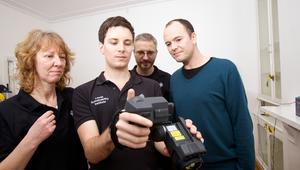Citu
The lean manufacturing process
Buildings and homes contribute one third of all UK carbon emissions. At Citu we try to minimize emissions at all stages of the house building process so we can help accelerate the transition to zero-carbon cities.This presents a huge array of challenges.
We try to source as much of the raw materials as locally as possible, and so minimize emissions from transport. We built our Citu factory for making the panels for the houses on the Climate Innovation District site, so no lorries need to be used to transport the housing sections. However, this does present challenges. We’ve managed to source the majority of the materials from suppliers within Yorkshire, but have had to go further afield for some components. Where we have had to do so we’ve always tried to keep it to within the UK.
We’ve managed to source the majority of the materials from suppliers within Yorkshire
To mitigate carbon emissions from the construction of our developments, we’ve created a new timber framed housing design in partnership with Leeds Beckett University. This locks away several tones of CO2 per house, and uses over fifty times less energy to produce than concrete or steel. We also use sustainably sourced bamboo for the flooring to save even more emissions from the materials used.
Where we do have to use concrete for foundations and other structural elements, we always use GGBS (Ground Granulated Blast Slag) cement, which is made from the waste products of blast furnaces. This means far less limestone is required in the clement mix, and because the process of decarbonizing limestone (in cement) produces almost 5% of total global CO2 emissions, this results in a huge CO2 saving. This cement also sets stronger and lasts longer than traditional Portland cement, meaning more durable buildings to pass on to the next generation.
The CO2 savings from the GGBS cement and timber framed design are enormous - several tonnes per house. Over our two developments that means well over o1000 tonnes of CO2 saved compared to traditional building materials.
By using our lean manufacturing process, we hope to dramatically cut the amount of waste created in building a home, and save vast amounts of resources. Our goal is to cut waste by over 50%. We also hope to get all wood cut to pre-set specifications, so wood never has to be cut on site and then off-cuts are wasted. The fact that factory offcuts will be used to heat the office means nothing goes to waste and this saves energy on heating.
The Climate Innovation District is our new big project. We hope to build over 500 sustainable homes near the city centre of Leeds. Using our timber framed design and building the homes to be extremely energy efficient will mean the development is net zero carbon. Its central location will mean it’s easy for residents to walk and cycle to their places of work in the city, preventing huge amounts of vehicle emissions and helping to make Leeds’ air cleaner.anufacturing process.




